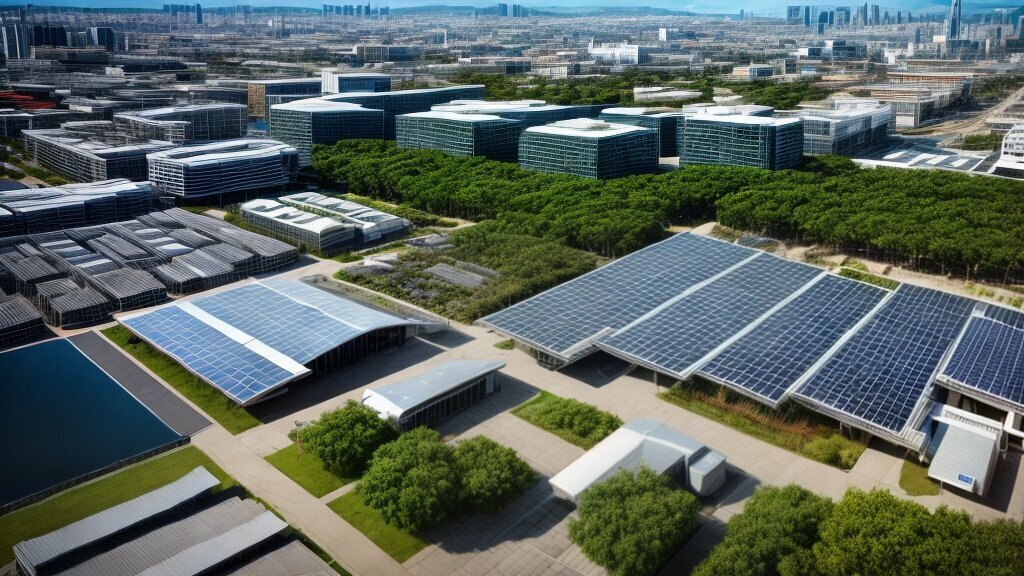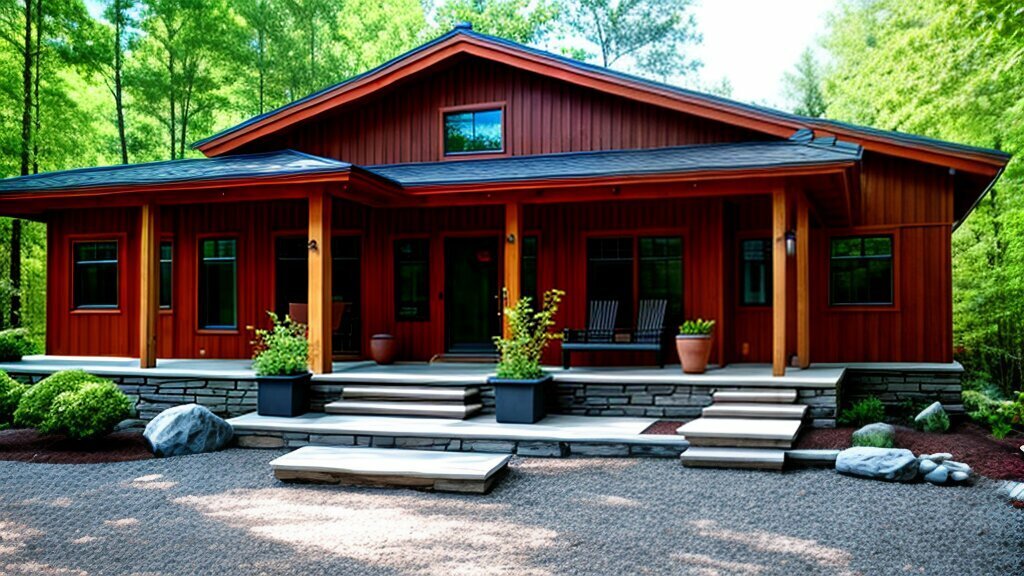Net-Zero Building: Paving the Way for a Carbon-Neutral Construction Industry
As the world aims to reduce its carbon footprint, the construction industry has a crucial role to play in achieving this goal. One way to make a significant impact is through the adoption of net-zero building practices. The concept of net-zero building involves designing and constructing buildings that generate as much energy as they consume annually, resulting in zero carbon emissions.
There are various sustainable building practices and green construction techniques that contribute to achieving net-zero building. These practices include utilizing renewable energy systems, implementing energy-efficient construction methods, and incorporating sustainable building materials.
Key Takeaways
- Net-zero building involves designing and constructing buildings that generate as much energy as they consume annually, resulting in zero carbon emissions.
- To achieve net-zero building, sustainable building practices and green construction techniques must be implemented.
- Examples of these practices include utilizing renewable energy systems, implementing energy-efficient construction methods, and incorporating sustainable building materials.
Eco-Friendly Construction Methods for Carbon-Neutral Building
As the construction industry moves towards a carbon-neutral future, adopting eco-friendly construction methods is crucial in reducing carbon emissions. Zero-emission building projects and the use of sustainable building materials are key components in achieving carbon-neutral buildings.
The integration of zero-emission technologies such as renewable energy systems can significantly reduce the carbon footprint of a building. Solar panels, wind turbines and geothermal heat pumps are excellent examples of renewable energy technologies that can be implemented in a building to achieve zero emissions.
Sustainable building materials can also contribute to reducing carbon emissions. These include recycled materials such as steel, glass and concrete, which significantly reduce greenhouse gas emissions during production. Low embodied energy materials, like adobe and rammed earth, can also be used to construct buildings.

Green roofs and walls are also innovative ways in which buildings can be designed to be carbon-neutral. These designs use vegetation to provide insulation and reduce energy consumption.
“The integration of zero-emission technologies such as renewable energy systems can significantly reduce the carbon footprint of a building.”
Moreover, adopting circular economy principles in the construction industry can reduce the waste of resources and minimize carbon emissions. This involves designing, producing and managing buildings in a way that extends the life cycle of materials and products, thereby reducing the demand for natural resources.
Overall, eco-friendly construction methods are essential to achieve carbon-neutral building. These practices can significantly reduce the carbon footprint of buildings and pave the way for a sustainable future in the construction industry.
Energy-Efficient Construction: A Key to Carbon-Neutral Development
Energy-efficient construction is a critical factor in reducing carbon footprint in the construction industry. By utilizing renewable energy systems, implementing low-carbon building solutions, and adopting sustainable building materials, we can successfully achieve carbon neutrality in construction.
Renewable energy systems such as solar, wind, and geothermal can provide clean energy sources to power buildings, reducing reliance on fossil fuels and carbon emissions. Additionally, low-carbon building solutions, such as smart insulation, efficient HVAC systems, and advanced lighting technologies, can greatly reduce energy consumption and carbon emissions in buildings.
The use of sustainable building materials, such as recycled steel, bamboo, and straw bale, can also contribute to carbon-neutral construction. These materials have a lower carbon footprint than traditional building materials and reduce waste in the construction process.
Ultimately, energy-efficient construction is a crucial component in achieving a carbon-neutral construction industry. By integrating renewable energy systems, implementing low-carbon building solutions, and adopting sustainable building materials, we can pave the way for a sustainable future.

Carbon-Neutral Construction Technologies for a Sustainable Future
The construction industry is continuously evolving, and with the increasing demand for sustainable building practices, new technologies are emerging to achieve carbon-neutral construction. These innovative technologies aim to reduce carbon emissions in the construction process and promote sustainable building practices. (https://softonic.com/)
One such technology is the use of prefabricated building components. Prefabricated buildings use less energy during construction and produce fewer greenhouse gas emissions, making them a more sustainable option compared to traditional construction methods. Incorporating prefabricated components into the construction process can significantly reduce a building’s carbon footprint while still maintaining structural integrity and design aesthetics.
Another emerging technology is the use of 3D printing in construction. 3D printing has the potential to revolutionize the construction process by creating precise, customizable, and unique building components. This technology reduces material waste, energy consumption, and overall construction time, making it a more sustainable option for construction projects. However, the high cost of 3D printing technology may limit its accessibility and implementation.
The importance of sustainable building certifications cannot be overstated in promoting and recognizing carbon-neutral construction practices. For example, the Leadership in Energy and Environmental Design (LEED) certification recognizes buildings’ overall sustainability, energy efficiency, and environmental impact. The BREEAM certification assesses the environmental performance of buildings and recognizes sustainable practices in design, construction, and operation.
Additionally, energy-efficient construction technologies such as renewable energy systems and low-energy lighting solutions can significantly reduce a building’s carbon footprint. Incorporating renewable energy systems, such as solar panels and wind turbines, into building design can provide a reliable and sustainable source of energy while also reducing reliance on non-renewable energy sources.
Overall, these emerging carbon-neutral construction technologies and sustainable building certifications pave the way for a more sustainable and environmentally conscious construction industry. By implementing these practices and technologies, we can reduce carbon emissions and create a more sustainable future.

Conclusion
Net-zero building is paving the way for a carbon-neutral construction industry. It is essential to adopt sustainable building practices and green construction techniques to achieve this goal. Eco-friendly construction methods such as zero-emission building projects and the use of sustainable building materials play a crucial role in reducing carbon emissions. Energy-efficient construction is also key to reducing carbon footprint, and the integration of renewable energy systems and low-carbon building solutions can help achieve carbon neutrality in the construction industry.
Emerging carbon-neutral construction technologies can revolutionize the industry, and sustainable building certifications promote and recognize carbon-neutral construction practices. The carbon-neutral construction industry is crucial for a sustainable future, and continued efforts and advancements are needed in building practices to achieve carbon neutrality in construction.
FAQ
Q: What is net-zero building?
A: Net-zero building refers to buildings that produce as much energy as they consume over the course of a year. These buildings are designed and constructed using sustainable building practices and utilize renewable energy sources to achieve a carbon-neutral operation.
Q: Why is net-zero building important for the construction industry?
A: Net-zero building is crucial in achieving a carbon-neutral construction industry. By reducing carbon emissions and utilizing sustainable building techniques, the construction industry can contribute to a more sustainable future and mitigate the impact of buildings on the environment.
Q: What are some eco-friendly construction methods for carbon-neutral building?
A: Eco-friendly construction methods include zero-emission building projects and the use of sustainable building materials. These methods aim to minimize the environmental impact of construction activities and reduce carbon emissions throughout the building’s lifecycle.
Q: How does energy-efficient construction contribute to carbon-neutral development?
A: Energy-efficient construction plays a key role in reducing carbon footprint. By integrating renewable energy systems and implementing low-carbon building solutions, the construction industry can significantly decrease energy consumption and emissions, moving closer to carbon neutrality.
Q: What are some carbon-neutral construction technologies?
A: Carbon-neutral construction technologies encompass innovative solutions that minimize or eliminate carbon emissions in building processes. Additionally, sustainable building certifications recognize and promote carbon-neutral construction practices, further driving the adoption of these technologies in the industry.








